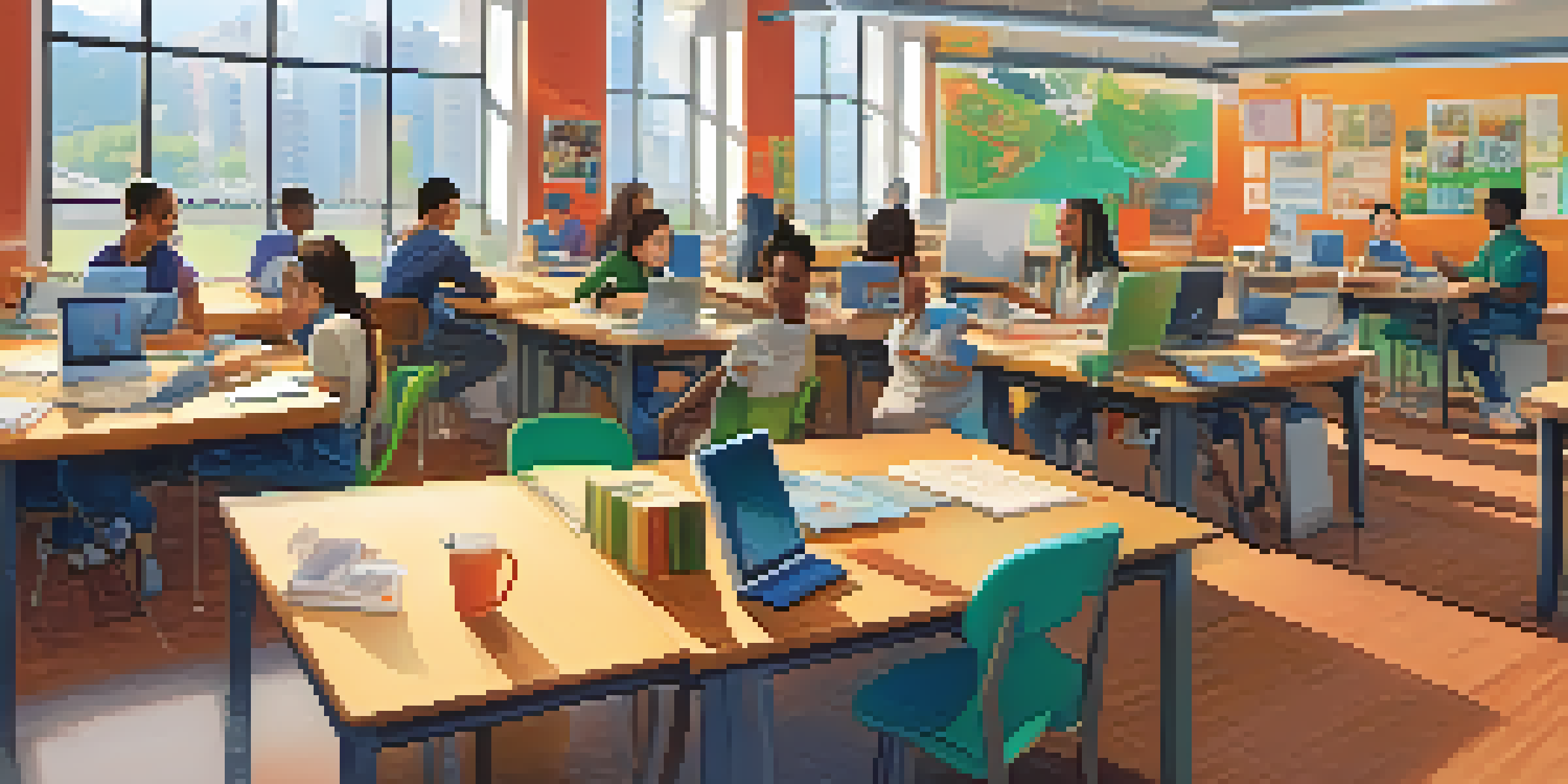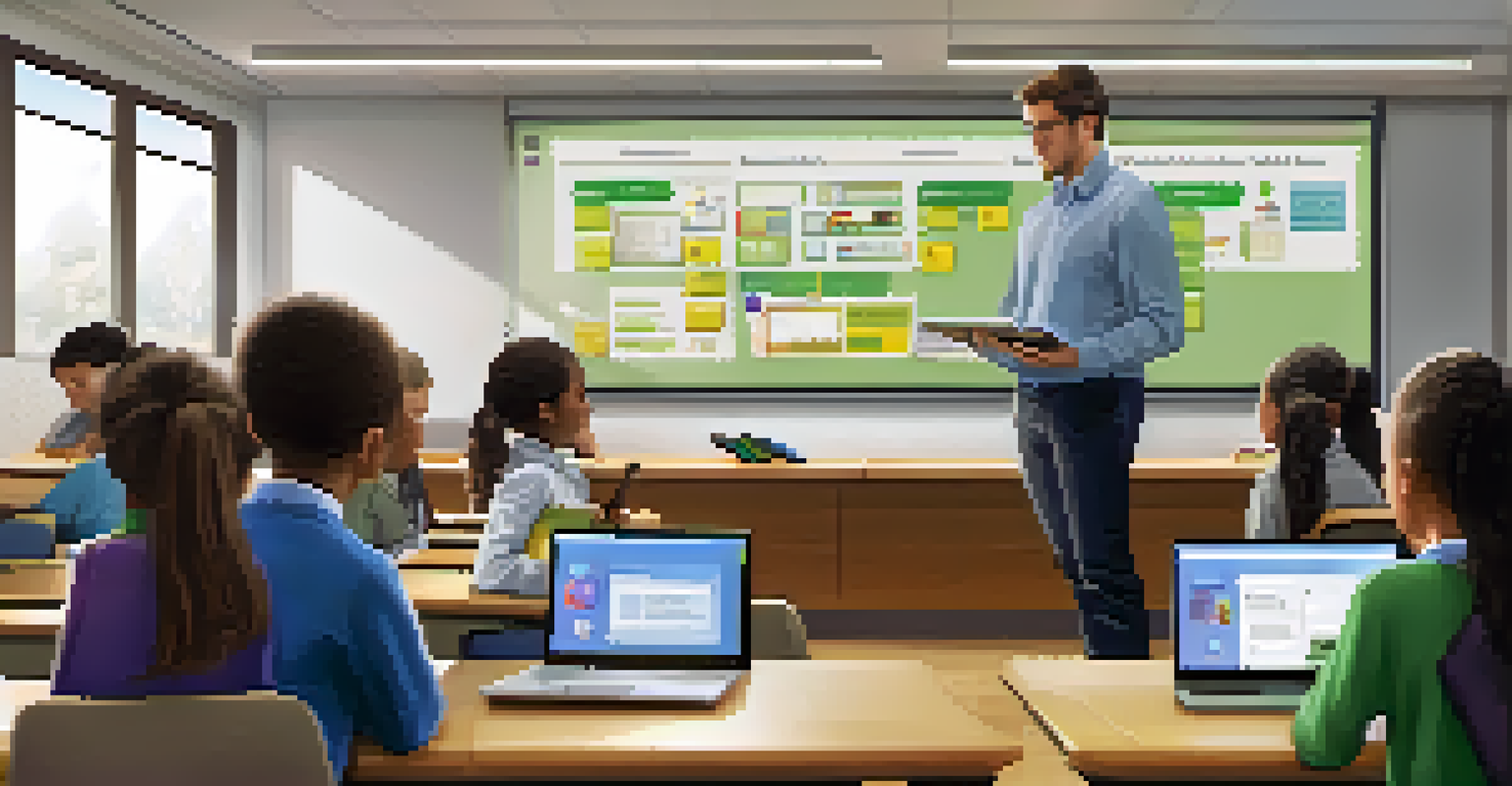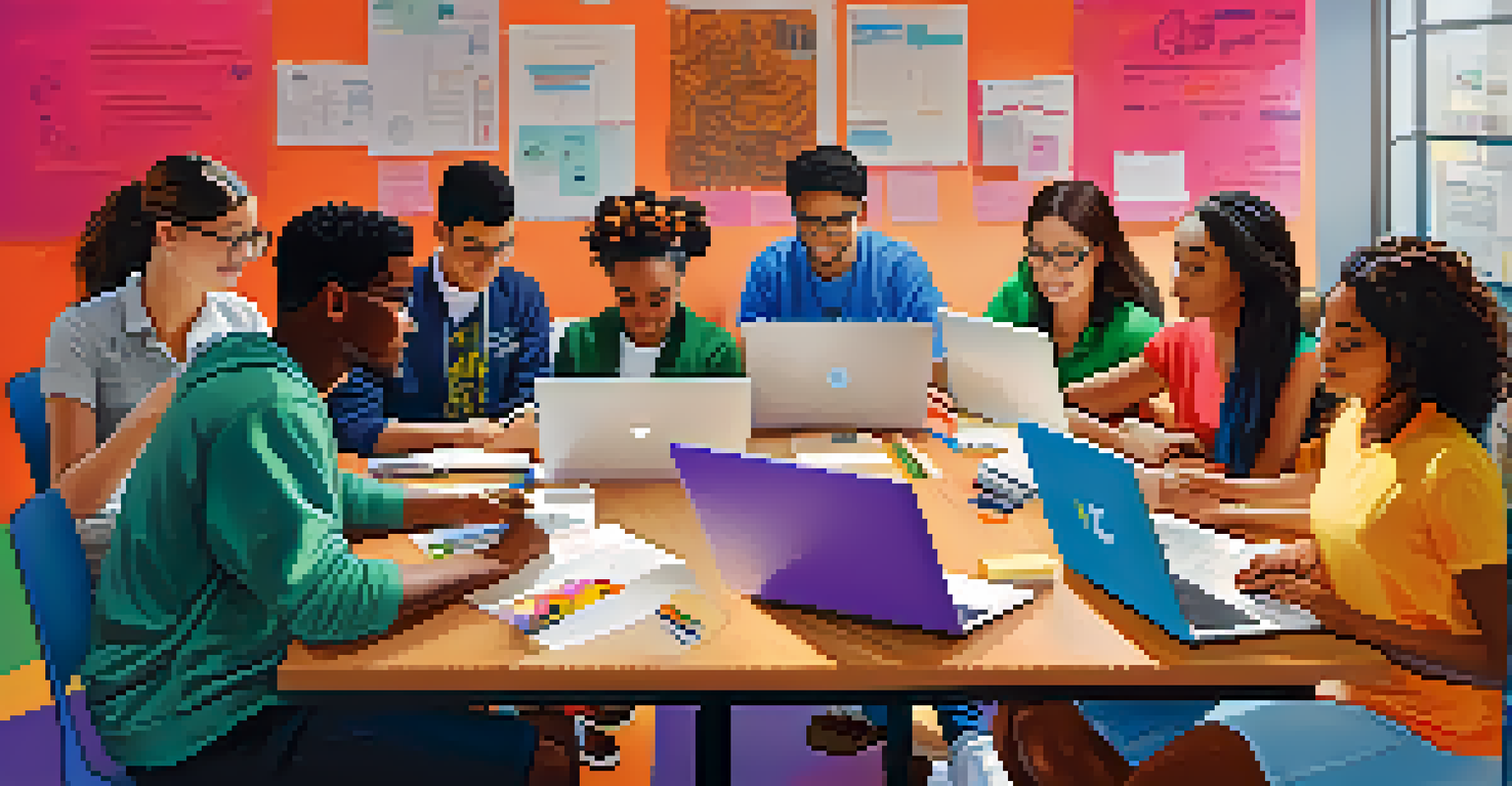Blended Learning: Preparing Students for the Future Workforce

Understanding Blended Learning: A Modern Approach
Blended learning combines traditional classroom methods with online education. This approach allows for a more flexible and personalized learning experience. Imagine a student who can review lecture material online at their own pace, while also engaging in hands-on activities in the classroom.
Blended learning is not just about technology; it's about creating a learning environment that fosters collaboration, critical thinking, and adaptability.
By merging these two formats, students can benefit from the strengths of both worlds. They gain the ability to learn independently while still having access to valuable teacher support. This creates an environment where students are more engaged and can explore topics in depth.
Furthermore, blended learning can cater to different learning styles. For instance, some students thrive on visual content, while others prefer interactive discussions. This adaptability is key in preparing students for diverse work environments.
The Importance of Digital Literacy in Today's Workforce
In a world increasingly driven by technology, digital literacy has become essential. It’s not just about knowing how to use a computer; it's about understanding how to navigate digital information effectively. In blended learning environments, students are often required to use various digital tools, helping them build this crucial skill.

As they engage with online resources and collaborative platforms, students learn to communicate and collaborate in virtual spaces. This experience is invaluable as many modern workplaces operate remotely or use technology to facilitate teamwork. Thus, students are better prepared for the demands of future jobs.
Blended Learning Enhances Engagement
By combining online and in-person methods, blended learning creates a flexible environment that keeps students engaged and allows for deeper exploration of topics.
Moreover, digital literacy extends beyond technical skills. It encompasses critical thinking and problem-solving abilities that students develop as they tackle real-world scenarios online. This holistic approach ensures that they are not just consumers of information but also creators and innovators.
Fostering Collaboration Through Blended Learning
One of the standout features of blended learning is the emphasis on collaboration. Online platforms often include discussion boards and group projects that encourage teamwork among students. This mirrors the collaborative nature of many professional environments, where teamwork is crucial for success.
The future belongs to those who learn more skills and combine them in creative ways.
In these settings, students learn to communicate effectively and resolve conflicts, which are key skills in any workplace. They practice giving and receiving feedback in a respectful manner, which helps build their confidence. Just think of how often we rely on teamwork in our daily jobs – these experiences in school directly translate to the workplace.
Additionally, blended learning can connect students with peers from diverse backgrounds. This exposure fosters a sense of global collaboration, preparing them to work in multicultural teams. The ability to navigate these dynamics will be essential as they enter an increasingly interconnected world.
Personalized Learning Paths: Meeting Individual Needs
Blended learning allows for personalized learning paths, catering to individual student needs. With a mix of online and face-to-face instruction, educators can tailor their teaching strategies to fit different learning paces and styles. For instance, students struggling with a particular concept can access additional resources online without feeling pressured in a traditional classroom setting.
This personalized approach not only promotes mastery of content but also enhances student motivation. When students have a say in their learning journey, they are more likely to take ownership and invest effort. Consider how much more excited a student might be when they can choose projects that align with their interests.
Digital Literacy is Essential Today
In a tech-driven world, blended learning helps students build digital literacy skills, preparing them for the demands of modern workplaces.
Moreover, personalized learning prepares students for the future by encouraging self-directed learning. They develop the habit of seeking out resources and solutions independently, a skill that will serve them well in their careers. This adaptability is vital in a job market that constantly evolves.
Bridging the Gap Between Theory and Practice
Blended learning effectively bridges the gap between theoretical knowledge and practical application. Students can learn concepts in class, but then apply that knowledge through online simulations or real-world projects. This hands-on experience is crucial in fields like engineering or healthcare, where practical skills are just as important as theoretical understanding.
For instance, a student studying biology might learn about ecosystems in class, then participate in an online simulation that allows them to manage a virtual ecosystem. This kind of experiential learning reinforces their understanding and makes the material more relatable.
As they transition to the workforce, this blend of theory and practice equips them with the skills needed for their specific careers. Employers value candidates who can demonstrate both knowledge and practical expertise, making blended learning an ideal preparation method.
Preparing for Lifelong Learning in a Changing World
In today's fast-paced world, the ability to learn continuously is more important than ever. Blended learning instills a mindset of lifelong learning, encouraging students to seek out new knowledge and skills throughout their lives. This adaptability is key as industries evolve and new technologies emerge.
With exposure to various learning formats, students become comfortable with self-directed learning. They learn how to find and utilize resources independently, whether that’s through online courses, webinars, or professional workshops. This capability not only benefits their careers but also enriches their personal lives.
Personalized Learning Drives Success
Blended learning offers personalized paths that cater to individual needs, fostering motivation and encouraging self-directed learning.
Moreover, the skills developed in blended learning environments, such as critical thinking and adaptability, prepare students for any challenges they may face in the future. They learn to embrace change and view it as an opportunity for growth, which is essential in an unpredictable job market.
The Role of Educators in Blended Learning Environments
Educators play a pivotal role in the success of blended learning models. They are not just instructors but facilitators who guide students through their learning journeys. By leveraging technology and personalizing instruction, teachers can create engaging and effective learning experiences.
Moreover, educators help students navigate the online resources available to them. They provide support and encouragement, ensuring that students stay motivated and on track. Just as a coach inspires athletes to reach their potential, teachers in blended settings empower students to take charge of their learning.

Additionally, educators must stay current with technological advancements to effectively integrate them into their teaching. Continuous professional development ensures they can provide the best possible learning experiences for their students. In this way, teachers themselves are lifelong learners, modeling the behaviors they wish to instill in their students.